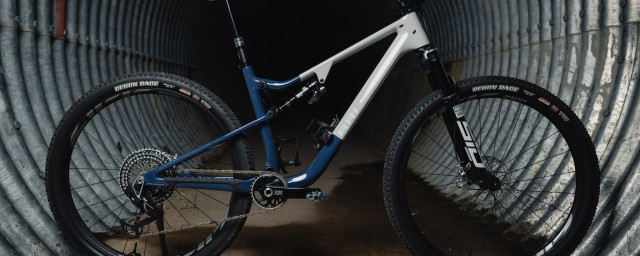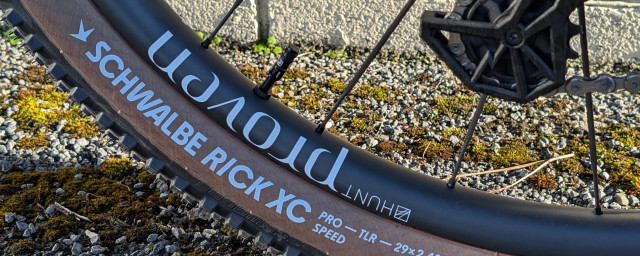British brand Cotic ditches titanium – will others follow?

Cotic is a long-established and innovative mountain and gravel bike brand based in the UK’s Peak District. It hass a long and well-earned repute for slick and comfortable steel-built frames, although they have also long since made frames in other materials, with the brand’s titanium frames being highly prized.
- The ultimate guide to frame materials: what's best for bikes?
- Cycling snake oil: How to spot dodgy marketing claims
- Five ways to tell your shock needs a service
Much of Cotic’s frame production uses Reynolds tubing, often 853 or its own chromoly custom tubing, all being designed to give that plush trail riding feel associated with the brand.
While many of the frames are produced in Taiwan and the full bikes are assembled in the UK, some of the frames are also UK-made by Five Land Bikes in Scotland, who produce titanium frames. After considering the titanium “issue” for a while, just a few days ago, Cotic founder Cy Turner announced that Cotic was no longer going to produce titanium frames due to ethical environmental reasons.
Cy started his Cotic adventure back in 2001 after switching his riding focus from downhill to trail riding and it was all about one bike at first – a bike he wanted made to order, to suit his style of riding as he felt his needs were not well served in the marketplace at the time.
After playing around with designs, fate garnered industry attention and Brant Richards of On One Bikes got in touch. He was impressed enough by what he saw on the drawing board to persuade Cy to take a leap of faith and go take his dream to the rest of the mountain biking world, hence 100 Cotic Soul bikes were ordered on a loan and a prayer, and the brand launched in 2003.
So, what’s the beef with titanium
We did contact Cotic on the matter but felt all it had to say on the matter could be found on the website and by following the link there to Reynolds Tubing and its sustainability statement on the various frame-building materials in use today.
As is often the case, few read beyond the headlines – and the Reynolds stats are somewhat enlightening, although whether the decision by Cotic will prove to influence either customers or other brands remains to be seen. In an ideal world, it may well have an impact, but of course, this is far from an ideal world, and we do not know how many titanium frames Cotic sells on average either.
Cotic’s cited reasons for ditching titanium are based primarily on sustainability, those being based on the Reynolds report and a Trek sustainability report backed by its findings and beliefs, which in the company’s own words concludes...
According to the Reynolds report, titanium produces three times the CO2 of steel production. It's almost always made from virgin material; mined ore. Cross-referencing this against the Trek sustainability report, this makes it almost as polluting as carbon fibre.
Titanium does have high fatigue resistance and is also completely corrosion resistant, too, which is great. However, the difficulty in welding it completely cleanly and other difficulties in processing means that titanium frames tend to have a higher failure rate than steel over time.
While titanium can be recycled, it's rarely done. Even when it is, it's a very difficult, high energy consumption process compared to steel and aluminium. It needs a lot of heat and a vacuum furnace to stop it from disastrously interacting with oxygen during heating.
As an aside, it's worth noting carbon fibre has a very high CO2 impact (a little higher than titanium and about the same as stainless steel). Made from crude oil which has to be extracted from the earth, it's impossible to recycle sustainably and ethically, therefore mostly ends up as a landfill
Will it make a real difference?
While it is indeed a commendable stance by Cotic, it is also worth considering other factors involved in how and where our bikes come from. There are a lot of economic elephants in the factories and board rooms of the bike, and of other manufacturing industries, and the vast majority of bikes (and other products) out there are built and shipped from the Far East or cheaper locations. These bikes are often made from materials and parts shipped from elsewhere in the world (although some tubing and other manufacturers also have local facilities in Asia), which are in turn often made from raw ingredients imported, mined or created elsewhere in the world – meaning shipping. Full bikes are often then painted or assembled elsewhere in the world – for fluctuating import duty reasons.
More so with mountain bikes but also across the various cycling genres, once customers do get their new bikes, they are often put in the back of a car and driven to a trail centre or favourable location to ride them and, such is the ever-increasing commercial trend, and the micro-evolution of bikes that these bikes often have a relatively short first-hand rider life – which is what fuels the bike industry.
Although steel as a frame material fell out of favour for several years, thanks to smaller brands such as Cotic, and to the revival of small and niche bike brands, its value has become duly more appreciated once again. There is little doubt that Cotic and Reynolds are right on the mark in that steel is environmentally a much friendlier material than many other materials available (apart from bamboo), especially if it’s based on recycled steel that is not shipped overseas and back again (Reynolds does use a lot of UK recycled steel, a material which was long ago produced in the UK, and most bikes were made of it), and steel is indeed highly durable and has great ride qualities, too, qualities lost on a whole generation of cyclists, who have grown up on carbon fibre and aluminium bikes.
That said, there are also many titanium frame owners around who have had their bikes for decades without a single dent and with no signs of corrosion (of the bike that is, not the riders, me included). Plus, given just how flexible and light carbon fibre is as a material and how much the major players of the bike industry champion it, then it’s hard to see them taking any action to change things in the near future. And, naturally, that reflects on the mass market, too, and indeed on our conceptions regarding materials and their values – I mean, (almost) every single sponsored pro rides carbon bikes.
Well done to Cotic for drawing attention to the impacts and sustainability values of the various materials we use and ride. Let’s hope that over time it does influence others, or at least help us to consider our purchasing decisions wisely, every vote counts, and every step and action we take matters.
Ultimately it is the end users, the customers, as to whether they are prepared to back steel and the relatively higher financial costs involved with smaller high-end steel bike production (oh the irony, compared to years ago when steel was cheap and cheerful), and to assess the values and perceived and also the proven compromises involved across the spectrum.










